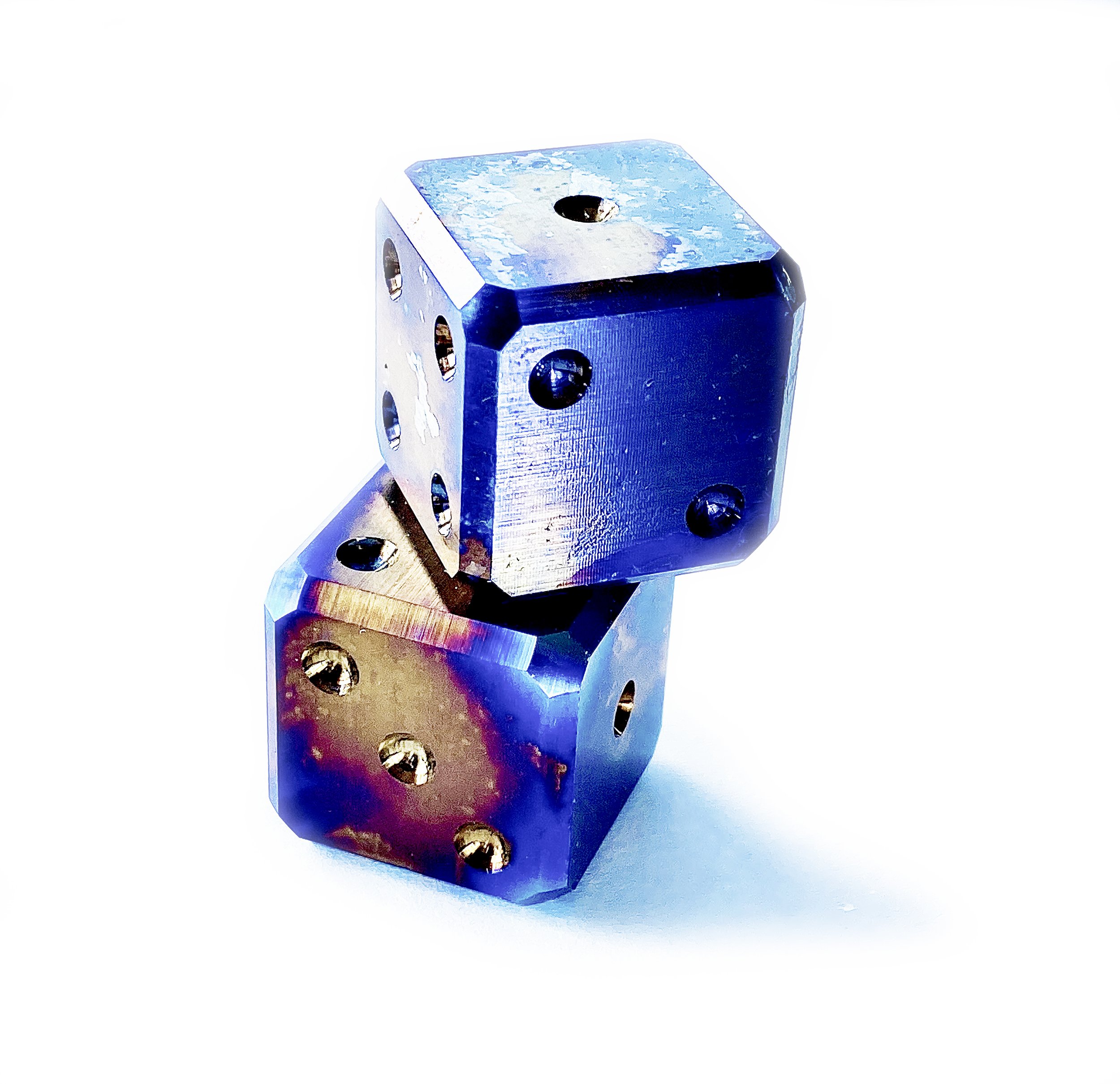Anodized Grade II Titanium dice CNC Machined - 6 Sided Casino die Set of 2
Anodized Grade II Titanium dice CNC Machined - 6 Sided Casino die Set of 2
Set of 2 Titanium Dice
Available for purchase is a CNC machined casino die. Our dice are standard 6 sided die. Actual dimensions are .688" (17.47 mm) square. They feature a brushed metal finish and flat bottom pips. These are a wonderful addition for any dice or titanium collector. Constructed from 99% pure Titanium these dice will literally last for all of eternity. The list price is for 2 dice. Titanium is one of the so-called reactive metals. This means that it reacts to certain conditions—current or heat, in this case—by developing an oxide layer that appears brightly colored, even though there is no pigment whatsoever.
The color is, in a sense, an illusion. The layer varies in thickness according to the degree of heat or the amount of voltage. This oxide layer is quite chemically inert and quite permanent. It is also very thin and transparent. Its transparency allows light to bounce off of both the front and back of the oxide layer. Because the layer corresponds in thickness to wavelengths of light, the bounced light reinforces certain wavelengths (colors) and interferes with others. This causes the oxide layer to appear colored. The mechanism is the same as for the colors on an oil slick or a soap bubble, but with two important differences. First, it is permanent. Second, the thickness of the layer changes in increments, causing it to produce some colors, and only those colors. So titanium will not turn red, for example, but will produce a strong pink under the right conditions. When heat-coloring, you must depend on practice and luck to make pieces match, but heat-coloring is, by its nature, a less precise undertaking. This is part of its charm. Whereas anodizing creates areas of one solid color, heating tends to create gradients and rainbow-like effects. Though it is not possible to mask areas from the heat, areas can be ground down to offer a fresh surface. However, if those areas are heated, the previously-colored areas will also be heated, and will change color as well.


